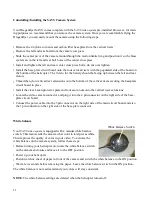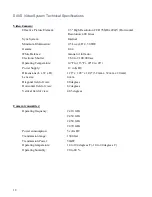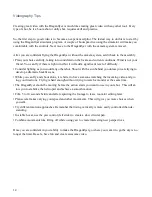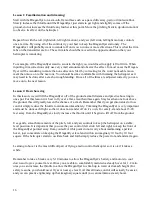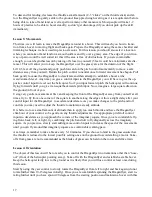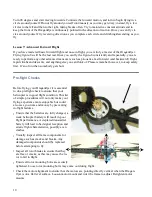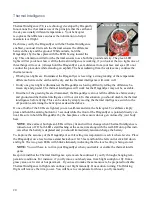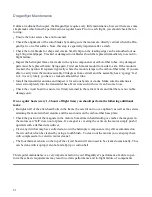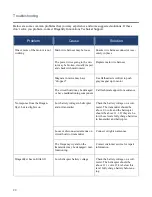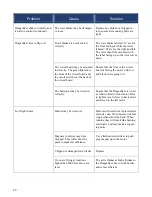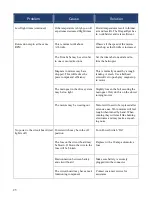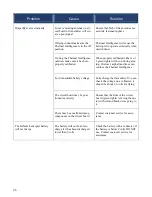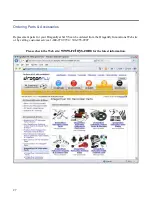
21
Draganflyer Maintenance
Unlike a traditional helicopter, the Draganflyer requires very little maintenance, however there are some
simple tasks which must be performed on a regular basis. Prior to each flight, you should check the fol
lowing:
• Ensure the rotor screws have not loosened.
• Check the alignment of the rotor blades by making sure the motors are directly vertical when the Dra
ganflyer is on a flat surface. Note: this step is especially important after a crash.
• Check the rotor blades for chips and cracks. Small chips on the leading edge can be smoothed out us
ing 150 grit sandpaper. Cracked or damaged rotor blades should be replaced immediately to avoid in
flight failure.
• Inspect the helicopter frame for cracks in the nylon components or carbonfiber tubes. Any damaged
parts must be replaced before flying again. Twist each motor mount from side to side. If the mount is
cracked, the nylon will separate (typically where the mount clamps to the carbonfiber tube). If you are
able to easily twist the mount assembly 90 degrees from vertical and the assembly has a ‘spongy’ feel
to it, it is very likely you have a cracked carbonfiber tube.
• Install the transmitter antenna and inspect it for serious bends or cracks. Make sure the antenna is
screwed completely into the transmitter base. Over time and with use it can become loose.
• Check the circuit board to ensure it is firmly retained in the vertical risers and that there is no visible
damage on it.
On a regular basis (every 13 hours of flight time) you should perform the following additional
tasks:
• Retighten all of the allenhead bolts in the frame (be careful not to overtighten!) as well as the screws
retaining the motors in their mounts and the acorn nuts on the carbonfiber base plate.
• Check the position of the magnets in the motors. Sometime in hard landing or crashes the magnets in
the motors can “fall” down out of place. If a magnet is covering the vents on the motor simply push it
upwards with a flathead screwdriver.
• Clean any dirt that may have collected on or in the helicopter components. Any dirt accumulated on
the circuit board can be cleaned by using a tooth brush. To clean out the motors you can spray them
with compressed air or electric motor cleaner.
• The four thermal sensors on the top of the circuit board will also need to be cleaned occasionally. This
can be done with isopropyl alcohol and a Qtip or cotton ball.
This regular maintenance is a very important factor in your Draganflyer’s performance, failure to per
form these basic requirements may result in erratic performance and inflight failure of components.





